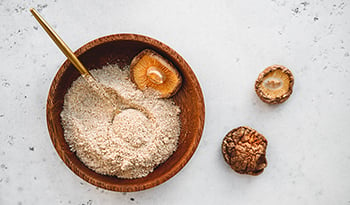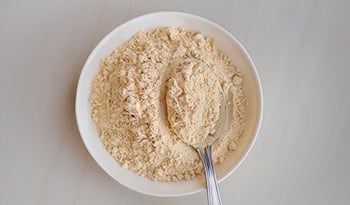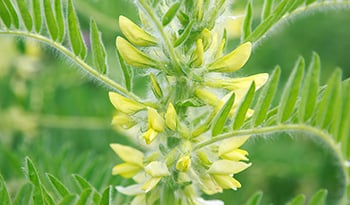Польза фо-ти для волос, почек, иммунитета и многое другое

Краткая история традиционной китайской медицины
Ранняя китайская медицина уходит своими корнями в шаманизм времен династии Шан около XVI века до н.э. По сути она была демонологической и объясняла возникновение болезней и недугов невидимыми силами предков и богов.
В период «весны и осени» династии Чжоу (770-446 гг. до н.э.) китайская культура достигла расцвета, появились известные философы и поэты, в том числе Конфуций, Лао-Цзы, Мо-Цзы и Тао Юаньмин. В то время философия и наука представляли собой единое целое, объясняя болезни с точки зрения естественных явлений. Множество философских течений, зародившихся тогда, называют «Сотней школ мысли». Две из них — конфуцианство и даосизм.
Традиционная китайская медицина была модернизирована и систематизирована во времена династии Чжоу. Именно тогда были сформулированы теория Инь–Ян, теория Пяти элементов и другие основополагающие теории, составляющие основу ТКМ.
Первым медицинским трактатом, посвященным теоретической систематической медицине ТКМ, является «Классика внутренней медицины Желтого Императора» (Huang Di Nei Jing). Этот текст датируется II–I веком до н.э.
Другие труды, такие как «Классика лекарственных средств божественного земледельца» (Shen Nong Ben Cao Jing), «Рассуждение о повреждении холодом» (Sheng Han Lun) и «Основные рецепты из золотого ларца» (Jin Gui Yao Lue), были написаны, вероятно, в III веке. Эти и другие известные трактаты классической китайской медицины до сих пор изучаются студентами-медиками по всему миру.
Традиционная китайская медицина — это комплексная система, состоящая из восьми направлений: иглоукалывание, траволечение, питание, работа с телом (туй-на/купирование/моксибустион), медитация, тай-чи/цигун (физические упражнения), фэн-шуй и космология. ТКМ опирается на мир природы и исходит из того, что здоровье и болезнь человека зависят от законов естественного порядка.
Согласно ТКМ, болезни могут возникать в теле, органах и меридианах различными способами. При застое, недостатке или избытке «энергии» или «ци» в органах и меридианах возникает болезнь. С помощью специальных методов диагностики врач ТКМ ставит пациенту диагноз, назначает рецепт и план лечения, охватывающий все направления ТКМ.
Китайский земледелец Шэнь-нун считается родоначальником китайской травяной медицины. Около 6000 лет назад Шэнь-нун изобрел телегу и плуг и, по-видимому, случайно открыл для себя чай. Говорят, что он составил каталог 365 видов лекарственных растений, который стал известен как медицинский трактат «Классика лекарственных средств божественного земледельца».
Что такое фо-ти?
Фо-ти является одним из самых популярных традиционных китайских лекарств и входит в состав многих препаратов и рецептур. На протяжении веков в Китае его используют для лечения различных заболеваний, обычно возникающих в процессе старения. Из сотен препаратов, содержащих фо-ти, многие запатентованы.
Ботаническое название этой древней китайской травы — Polygonum multiflorum. Оно также известно как горец остроконечный или горец японский, или He Shou Wu на китайском языке. Впервые оно упоминается в медицинском трактате X века под названием Ri Hua-Zi.
Это растение культивируется во многих регионах Китая и Японии. Фо-ти растет в кустарниковых долинах, лесах и расщелинах скал на высоте от 200 до 3000 метров над уровнем моря. Это быстрорастущее вьющееся растение, которое недавно начали выращивать и на Западе.
Фо-ти обычно используется одним из двух способов — в сыром или приготовленном (тушеном или пареном) виде. Оно обладает разным действием в зависимости от формы приготовления.
Свойства сырого и приготовленного фо-ти
В ТКМ свойства трав зависят от их вкуса. Приготовленный фо-ти (Zhi He Shou Wu) имеет сладкий, горький, вяжущий и слегка терпкий вкус. Его основное лечебное действие распространяется на органы и меридианы печени и почек.
Фо-ти считается питательной травой. Она питает кровь, инь и сохраняет энергию. Фо-ти используется при дефиците инь или при головокружении, шуме в ушах, преждевременном поседении, болях в спине и коленях, ухудшении зрения, бессоннице и запорах. Фо-ти укрепляет кости, связки и сухожилия.
Фо-ти в сыром виде (He Shou Wu) имеет горький, сладкий, вяжущий и нейтральный вкус. Его действие распространяется на каналы печени, сердца и толстого кишечника. Оно увлажняет кишечник, выводит токсины, сокращает язвы, нарывы, абсцессы, а также используется при лечении зоба, золотухи (заболевание, вызывающее туберкулез) и малярии. Стебли и листья используются при бессоннице и для лечения различных кожных заболеваний и зуда. В ТКМ сырая форма фо-ти используется для облегчения жара и выведения токсинов.
В этой статье мы рассмотрим полезные свойства фо-ти в приготовленной форме.
Легенда о фо-ти и здоровье волос
Китайское название фо-ти (He Shou Wu) буквально переводится как «черноволосый Хе». Легенда гласит, что генерал Хе был осужден за серьезное преступление и приговорен к заключению и смерти в отдаленной камере, вырытой в земле, без еды и воды.
После года заключения его палачи вернулись в камеру, чтобы забрать останки для погребения. Однако они с удивлением обнаружили, что генерал Хе не только не умер, но и помолодел. Даже его волосы вновь стали черными. Лишенный пищи и воды, генерал Хе был вынужден питаться исключительно вьющимся растением, которое проросло в щели его камеры. Это растение было названо He Shou Wu в память о выжившем и помолодевшем генерале Хе.
В другой истории, рассказанной Ли-Ао в 813 году, говорится, что растение He Shou Wu помогло одному мужчине восстановить сексуальную потенцию, стать отцом, вернуть свой цвет волос и дожить до 160 лет.
Обе эти истории являются всего лишь легендами, но свидетельствуют об омолаживающих свойствах He Shou Wu.
Целебные свойства фо-ти
Усиление действия инсулина и контроль веса
Исследования показывают, что фо-ти может помочь в управлении весом и сопутствующих метаболических заболеваниях.
В организме человека существует два типа жировой ткани — белый жир и бурый жир. Бурый жир играет важную роль в регулировании энергетического обмена в организме. Он расщепляет сахар (глюкозу) в крови для создания тепла и поддержания температуры тела. Белый жир является нетермогенным, то есть не создает тепла. Белого жира в организме больше, и его сложнее устранить при похудении.
В одном опыте на мышах с ожирением фо-ти подавил образование белой жировой ткани и нормализовал липидный обмен в бурой жировой ткани.
В другом эксперименте мышей кормили пищей с высоким содержанием жира и экстрактом фо-ти или гарцинии камбоджийской в течение 12 недель. Мыши, употреблявшие экстракт фо-ти, набрали меньше веса и жира и имели меньшую резистентность к инсулину, чем мыши, которых кормили пищей с высоким содержанием жира без приема фо-ти. У них также наблюдались изменения в экспрессии генов, связанных с липидным обменом в белой и бурой жировой ткани.
Ученые считают, что флавоны, хиноны, фосфолипиды и стильбены, содержащиеся в фо-ти, могут быть источником его полезных свойств.
Антивозрастные и нейропротекторные свойства
Оказывается, антивозрастные свойства фо-ти — это не просто легенда. Фо-ти может оказывать нейропротекторное действие, например, улучшать когнитивные функции мозга. Его многочисленные химические соединения и антиоксиданты могут помочь в лечении болезней Альцгеймера и Паркинсона. Фо-ти также может способствовать росту волос.
Поддержка работы печени
Ученые утверждают, что фо-ти может способствовать регенерации печени и подавлять рост звездчатых клеток, которые приводят к циррозу печени. Именно поэтому оно может быть полезным при лечении поражений печени от применения фармацевтических препаратов.
Поддержка иммунной системы и антитромбоцитарная активность
Фо-ти может помочь регулировать иммунную систему. Согласно исследованиям, фо-ти увеличивает выработку Т-клеток, которые борются с инфекцией, и В-клеток, которые создают антитела.
Эта трава также оказывает противовоспалительное действие на толстую кишку и может помочь больным колитом.
Поддержка работы почек
Фо-ти может помочь улучшить работу почек у людей с диабетической нефропатией. Диабетическая нефропатия может привести к почечной недостаточности или конечной стадии болезни почек.
Безопасность и применение
Фо-ти в целом безопасен для длительного употребления. Людям с диареей или мокротой, вызываемой заболеваниями селезенки, следует избегать употребления фо-ти.
Как и в случае со всеми травами и добавками, проконсультируйтесь с врачом или дипломированным акупунктуристом/специалистом традиционной китайской медицины, прежде чем попробовать фо-ти, чтобы исключить его взаимодействие с другими лекарствами, которые вы принимаете.
Источники:
- Choi, Ra-Yeong, and Mi-Kyung Lee. Polygonum multiflorum Thunb. Hot Water Extract Reverses High-Fat Diet-Induced Lipid Metabolism of White and Brown Adipose Tissues in Obese Mice. Plants (Basel, Switzerland) vol. 10,8 1509. 23 Jul. 2021, doi:10.3390/plants10081509
- Lin L, Ni B, Lin H, et al. Traditional usages, botany, phytochemistry, pharmacology and toxicology of Polygonum multiflorum Thunb.: a review. J Ethnopharmacol. 2015;159:158-183. doi:10.1016/j.jep.2014.11.009
- Bensky D, Clavey S, Stoger E, Bensky LL. (2015). Chinese Herbal Medicine Materia Medica (3rd edition. Eastland Press.
- Tierra M, Tierra L. (1998). Chinese Traditional Herbal Medicine Vol II Materia Medica and Herbal Resource. Lotus Press.
ОТКАЗ ОТ ОТВЕТСТВЕННОСТИ:Информация, содержащаяся в Центре здоровья, не предназначена для постановки диагноза...













































































 Содержание
Содержание















